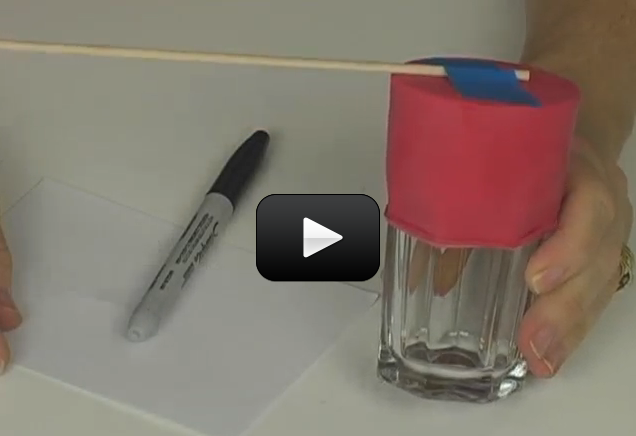
A barometer uses either a gas (like air) or a liquid (like water or mercury) to measure pressure of the atmosphere. Scientists use barometers a lot when they predict the weather, because it’s usually a very accurate way to predict quick changes in the weather.
Barometers have been around for centuries – the first one was in the 1640s!
At any given momen, you can tell how high you are above sea level by measure the pressure of the air. If you measure the pressure at sea level using a barometer, and then go up a thousand feet in an airplane, it will always indicate exactly 3.6 kPa lower than it did at sea level.
Scientists measure pressure in “kPa” which stands for “kilo-Pascals”. The standard pressure is 101.3 kPa at sea level, and 97.7 kPa 1,000 feet above sea level. In fact, every thousand feet you go up, pressure decreases by 4%. In airplanes, pilots use this fact to tell how high they are. For 2,000 feet, the standard pressure will be 94.2 kPa. However, if you’re in a low front, the sea level pressure reading might be 99.8 kPa, but 1000 feet up it will always read 3.6 kPa lower, or 96.2 kPa.
Please login or register to read the rest of this content.


The instrument needs to be in the location that you want to measure, just like a thermometer.
dose the barometer need to outside
Yes Thanks
But mine only moved 3 times then stopped 🙁 is that normal? What do people use them for? 0 0
___
[ my family did touch it in curiosity( idk how to spell that hope that’s right LOL ) could that have anything to do with it?]
Thank you
again 🙂
Yes that does help
Thank you
Watch the video around 1:36 for a complete explanation. When the air pressure on the inside the cup (under the balloon lid) is the same as outside of the glass, nothing happens and the balloon stays flat.
When a storm is brewing outside, run back to your cup and you’ll notice gets the balloon lid bulged out a little bit because the air outside the cup is just a little bit lower than it was when you first put the balloon on the cup (trapping the air inside, so it doesn’t change pressure). Does that help?
Yes it is a lot easier to see the longer the straw is. You’ll want to watch the end of it closely and compare it to the previous day’s markings.
Also dose the straw (or whatever you ues) work better the longer they are?
Thanks again ☺️
The stick moves on it’s own right ?
(I just wanted to make sure)
Can you explain how it does this again because I don’t quite understand
Thanks!!!!
What does it mean when the stick goes up? Does it mean there isn’t a storm coming? Thanks, Noah
OK, I think I’m beginning to grasp it a little better. Thank you.
This morning my 7y.o. son checked the barometer and started yelling that a storm was coming. Well it sure did storm, so much that it destroyed our barometer and hygrometer. He was almost in tears when he saw his instruments battered. Luckily, we can make them again tomorrow. Thanks for these awesome lessons. My kids take science very seriously now!
There are molecules in a volume of cool air than warm air, but since there’s no solid container wall keeping that cool air from moving around and mixing with other air, there’s a a noticeable change in pressure.
An example: a balloon has a higher pressure inside because you have more air molecules on the inside of the balloon than the outside, and the balloon skin itself keeps them separate. If you place the balloon in the freezer, it will shrink slightly (change volume) as the temperature decreases, but the pressure will remain about the same. If you weigh the balloon before and after putting it in the freezer, it will weight the same because the number of molecules inside has not changed.
If you have two balloons the same size, one filled with cold air and the other with hot air, would they weight the same?
Cooler air is more dense than hot air, so shouldn’t more cool air mean more weight/higher pressure?
Yes – that’s how it works! Great job!
Will the air pressure be different inside than out side
How fast is the pressure changing? If it’s slowly decreasing, it means the current weather is getting slowly worse because you’re at the end of a higher-pressure system. A fast drop means bad weather conditions are on the way. The atmosphere (the air that covers the surface of the Earth) has mass, weight and volume, and it is constantly moving due to the planet rotating as well as the seasons (where the Earth is in it’s orbit around the sun). These things creates differences in temperature, which drive the weather systems on our planet as the different temperature/pressure of air masses move around.
Why does the air pressure change when storms are comming?
Thank you
Zachary
You’re so welcome! I am happy you are enjoying the content. 🙂
And no, the time stamps on the website are not correct… I should really fix that.
To make a wind vane – it’s like an anemometer with arrows instead of cups. Push a pin through the center of a straw and then through the top of the pencil eraser as before. Put an arrow head on one of the straw and a tail on the other and you have a wind vane! Make sure it can freely rotate (try blowing on it to be sure).
You don’t have to make a cloud tracker… just make the ones you want to for your weather station! If you find you need to know whether it’s cloudy or sunny and you don’t want to stand around all day and make observations, then make the tracker.
And yes, place your station where you want to get information about the weather. Having it indoors and wanting to know the weather outside isn’t going to work. 🙂
Hi again!
I was just wondering if the thermometer can measure air temperature, and also if you have any videos on how to make a wind vane?
Thank you so much! We really love your website and we appreciate how much work you put into it.
Juliette (12)
P.S. Did you really write that at midnight your time? I’m way over here in Australia, so it’s 8:28pm our time
right now.
Ok, thanks!
I’m making a weather station in geography, to investigate weather data and how much it varies in an area.
I have already made a rain gauge, an anemometer, and a hygrometer. Is a cloud tracker necessary? It doesn’t mention it in my geography book, so I am not sure.
Thank you!
Juliette
P.S. Can you use the hygrometer outside? Thx!
No – it needs to be more stretchy and airtight.
Hi Aurora,
Can you use Cling wrap or Glad wrap as a substitute for the balloon?
Thanks,
Juliette (12)